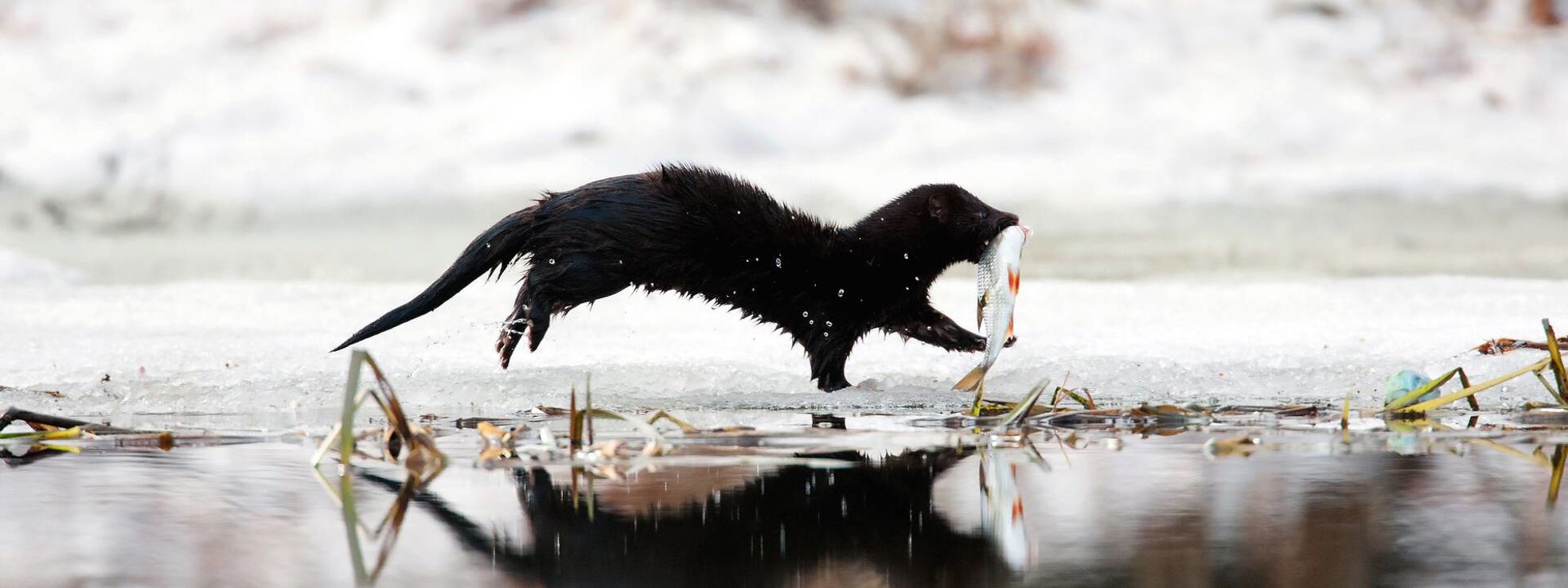In Finland, cottagers own a relatively large amount of coastline, which is an important breeding area for both mink and raccoon dogs," says Petri Passila, project manager at the Finnish Hunters Association in Valkeakoski.
The beaches are full of food and the structures of the cottage and the built environment of the yard provide suitable nesting sites.
"The mink and raccoon dog, which are used to humans, thrive in places like this, and it is also easy to keep the mink population under control on the cottage beaches," Passila says enthusiastically.
The funding from Metsä Group was more than a lottery win for the Finnish Hunters Association, says Passila.
"It gave us a significant advantage in moving the project forward without putting a burden on the Finnish Hunters Association’s coffers."
The task of the cottagers involved in the invasive alien predators project is either to report invasive alien predators in the area or to check once a day the trap brought into the cottage yard by the hunter. However, it is the responsibility of the hunters in the areas to check the traps for live catches on a daily basis.
If you wish, you can also purchase a trap yourself, as there is no current requirement for a hunting card or permit to trap invasive alien predators. However, alien trapping is a strictly controlled activity and subject to strict rules," says Passila.
"The Jalmari box trap used in the project is easy to use and safe, and can be used by anyone to trap mink and raccoon dogs."
The raccoon dog was originally introduced from the eastern border of the Caucasus at the beginning of the last century as a farm animal. The first fugitives were recorded in the 1940s and 1950s.
The raccoon dog is omnivorous and can survive in harsher conditions. "One adult pair of raccoon dogs can wipe out the waterfowl population of the Reed Bay in one spring," Passila laments.
"In the past, it was thought that raccoon dogs could not swim, but a study in Southwest Finland found that a collared raccoon dog had made swimming trips of up to two kilometres between islands after the eider nesting season had started," says Passila.
The mink population, which originated in North America, has taken off from the tarsiers. The mink is agile both on land and in the water. It preys on fish and bottom-dwelling animals in lakes. It is also a skilled climber and is not immune to tent pits.
"Despite their cuteness, both mink and raccoon dogs are complete predators," says Passila.
Both species are a threat to Finland's biodiversity. Invasive species have few natural enemies, the mink has an otter and the raccoon dog has a lynx and a wolf.
"But even though there have been two wolf packs in the area, a vibrant population of raccoon dogs has survived, so human help is also needed to reduce the population," says Passila.
The project, which is almost entirely volunteer-driven, involves all 16 districts of the Finnish Hunters Association from Hango to Lapland. The district managers of the selected project areas will contact voluntary hunters from hunting clubs who are interested in hunting alien predators.
The hunters, in turn, will contact the cottagers in the area in the spring.
"The Facebook bush radio has also proved to be a good channel, but it takes a lot of foot traffic to make it work," says Passila.
In three years, 1 568 traps have been distributed to hunters. The hunters, in turn, have distributed the traps to cottagers, either with the cottagers doing the trapping themselves or with the regional hunters doing the trapping.
"Hunters are responsible for the proper burial of the prey. This will also prevent the spread of the trichinella roundworm in game animals."
Feedback from cottagers has been almost overwhelmingly positive, with hunters and donors also pleased.
"And best of all, our understanding of the impact of invasive alien predators on native species has increased," says Passila.
The article was originally published Metsä Group Viesti-magazine 4/2023
 Metsä Forest
Metsä Forest
 Metsä Wood
Metsä Wood
 Metsä Fibre
Metsä Fibre
 Metsä Board
Metsä Board
 Metsä Tissue
Metsä Tissue
